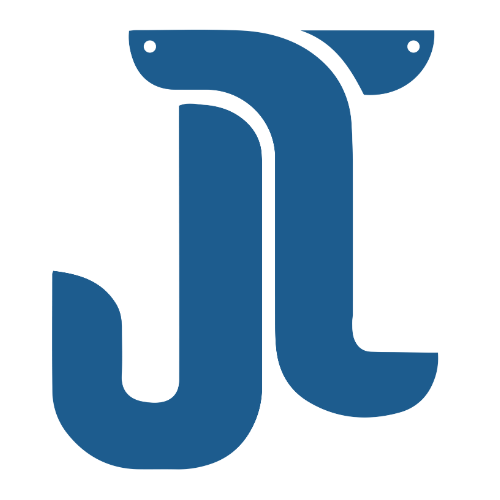How PLM Integration with ERP Enhances Product Quality Management
In the advanced time of manufacturing and item advancement, businesses confront developing challenges to keep up high-quality measures whereas assembly market requests for development and speed. Integrating Product Lifecycle Management with Enterprise Resource Planning has developed as a transformative arrangement to improve item quality management.PLM-ERP Integration Improves Quality Management.
Understanding PLM and ERP Systems
Product Lifecycle Management (PLM) centers on overseeing a product’s whole lifecycle, from starting plan and advancement to generation, dissemination, and inevitable transfer. It centralizes product-related information, counting plans, details, and corrections, giving a comprehensive view of a product’s journey.
Enterprise Resource Planning (ERP) systems, on the other hand, handle operational forms such as acquisition, stock management , manufacturing, and financials. ERP guarantees that assets are ideally utilized to execute commerce procedures effectively.
While PLM oversees the product’s outline, ERP executes the diagram, guaranteeing that the last item adjusts with commerce targets. The integration of these systems bridges the crevice between plan and execution, cultivating collaboration and efficiency.PLM-ERP integration improves quality management.
The Part of Integration in Quality Management
Quality management is the spine of effective item improvement and conveyance. By coordinating PLM with ERP, businesses can:
1. Guarantee Consistency Over Departments
Integration makes a bound-together information stage, empowering consistent communication between plan, building, manufacturing, and quality affirmation groups. This guarantees that all divisions work with the most up-to-date item information, diminishing errors and miscommunication.
2. Upgrade Alter Management Processes
In a disengaged environment, implementing engineering change orders (ECOs) regularly comes about in blunders or delays. PLM-ERP integration guarantees that any changes in the PLM system are consequently upgraded in ERP. This synchronization makes a difference when generation groups work with exact data, decreasing the chance of defects.
3. Progress Traceability and Compliance
Regulatory compliance and quality standards demand detailed traceability of product components and processes.Coordinated systems keep up a total record of item information, counting fabric sources, manufacturing strategies, and quality checks, guaranteeing compliance with industry standards.
Key Benefits of PLM-ERP Integration for Quality Management
1. Consistent Collaboration
Integration disposes of silos, cultivating real-time collaboration between plan and generation groups. Originators and engineers can share item upgrades straightforwardly with manufacturing groups, lessening blunders and improving item quality.
2. Proactive Quality Control
Integrated systems empower the recognition of potential quality issues early in the planning stage. For occurrence, by connecting PLM information with ERP’s generation criticism, companies can distinguish plan blemishes some time recently manufacturing starts, sparing time and costs.
3. Computerized Quality Checks
Integration encourages computerized quality checks by connecting generation forms with plan details. Any deviations from the set parameters trigger alarms, guaranteeing prompt remedial activities and decreasing imperfect outputs.
4. Improved Provider Collaboration
Suppliers play a basic part in item quality. By coordinating PLM and ERP, businesses can give providers access to overhauled determinations and quality necessities. This guarantees that components meet quality measures some time recently coming to the generation line.
5. Diminished Time-to-Market
Efficient quality management speeds up generation cycles, empowering speedier time-to-market. Coordinate systems streamline workflows, decrease revamp, and guarantee that items meet quality benchmarks from the outset.
Real-World Applications of PLM-ERP Integration
1. Automotive Industry
In the car division, exacting quality benchmarks and security directions require vigorous systems. PLM-ERP integration permits producers to oversee complex plans, guarantee compliance with security standards, and screen generation quality in real-time.
2. Consumer Electronics
For customer gadgets, quick advancement cycles and worldwide supply chains pose noteworthy challenges. Coordinated systems offer assistance to oversee plan changes, screen provider quality, and guarantee item consistency over markets.
3. Aerospace and Defense
Aerospace and defense businesses require exact documentation and traceability. PLM-ERP integration guarantees that all components meet strict quality measures and that any changes in plan are quickly reflected in production.
Steps to Achieve Successful PLM-ERP Integration
1. Define Integration Objectives
Before integration, businesses must clearly characterize their objectives, such as decreasing surrenders, making strides in compliance, or quickening item development.
2. Select the Right Tools
Selecting PLM and ERP systems that offer consistent integration capabilities is basic. Open APIs and middleware arrangements can disentangle the integration process.
3. Map Processes
Understanding and mapping existing forms guarantees that integration adjusts with commerce workflows. Recognizing potential bottlenecks and redundancies makes a difference and makes a proficient system.
4. Train Teams
Successful integration requires client appropriation. Giving preparation to groups guarantees they get it how to use the coordinates system for quality management.
5. Monitor and Optimize
Post-integration, persistent checking and optimization guarantee that the system conveys cravings. Customary input and overhauls offer assistance to refine forms and upgrade performance.
Future Trends in PLM-ERP Integration
1. AI and Machine Learning
Artificial intelligence (AI) and machine learning (ML) are revolutionizing PLM-ERP integration. Prescient analytics can figure quality issues, whereas brilliantly mechanization streamlines processes.
2. IoT-Enabled Quality Monitoring
The internet of Things (IoT) empowers real-time quality checking by collecting information from associated gadgets. PLM-ERP integration leverages this information to guarantee item quality at each stage.
3. Cloud-Based Solutions
Cloud-based PLM and ERP systems offer versatility and adaptability, making integration more available for businesses of all sizes.
Conclusion
Integrating PLM with ERP is no longer an extravagance but a need for businesses to remain competitive in today’s fast-paced showcase. By fostering collaboration, enhancing traceability, and automating quality checks, this integration revolutionizes product quality management.Companies that grasp PLM-ERP integration position themselves for victory, conveying inventive, high-quality items that meet client expectations.PLM-ERP integration improves quality management.
At Jupical Technologies, we specialize in making a difference. Businesses tackle the control of coordinate systems to optimize operations and drive quality brilliance. Contact us for a free demo and find how we can change your quality Management forms.
Read more:


